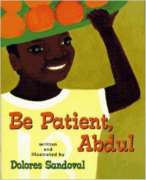
With the help of his younger sister, 7-year-old Abdul raises money to go to school by selling oranges in the marketplace in Sierra Leone.

With the help of his younger sister, 7-year-old Abdul raises money to go to school by selling oranges in the marketplace in Sierra Leone.
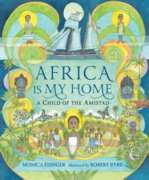
“Sarah Margru Kinson, as she came to be known, was only nine years old when she was taken from her home in Africa and brought to Cuba, where she and fifty-two other captives, including three other children, were sold and taken aboard the Amistad. The Africans revolted and took over the ship, but were later captured and put on trial, a trial that went all way to the Supreme Court and was argued in the Africans’ favor by John Quincy Adams, allowing them to return home to Africa. Here is that extraordinary story as told by one of those children. A fictionalized account.”–Jacket flap.
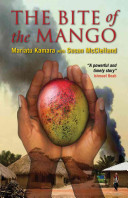
The astounding story of one girl’s journey from war victim to UNICEF Special Representative. As a child in a small rural village in Sierra Leone, Mariatu Kamara lived peacefully surrounded by family and friends. Rumors of rebel attacks were no more than a distant worry. But when 12-year-old Mariatu set out for a neighboring village, she never arrived. Heavily armed rebel soldiers, many no older than children themselves, attacked and tortured Mariatu. During this brutal act of senseless violence they cut off both her hands. Stumbling through the countryside, Mariatu miraculously survived. The sweet taste of a mango, her first food after the attack, reaffirmed her desire to live, but the challenge of clutching the fruit in her bloodied arms reinforced the grim new reality that stood before her. With no parents or living adult to support her and living in a refugee camp, she turned to begging in the streets of Freetown. In this gripping and heartbreaking true story, Mariatu shares with readers the details of the brutal attack, its aftermath and her eventual arrival in Toronto. There she began to pull together the pieces of her broken life with courage, astonishing resilience and hope.
See the review at WOW Review, Volume 3, Issue 4
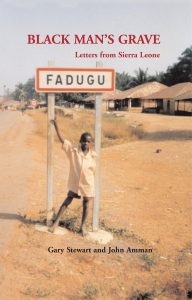 The memoir and the movie have only scratched the surface. Black Man’s Grave tells what happened to place the boy-turned-soldier in jeopardy and why Sierra Leone’s diamonds acquired their bloody tinge. Meet the greedy politicians who hijacked a fledgling democracy, the rebels who brought them down, and the villagers who struggled to survive the country’s chaotic descent. The cast includes Sierra Leone’s “big man,” Siaka Stevens; RUF leader Foday Sankoh, whose grandfatherly demeanor belied the viciousness with which he sought to impose his “revolution”; and one who aspired to the big man role, Charles Taylor from next-door Liberia. Taylor’s support for Sierra Leone’s rebel war expanded from initial hostility toward Stevens’s handpicked successor into a commercial venture that supplied arms in exchange for diamonds. In an offshoot of that pernicious trade, links between Sierra Leone’s diamonds and al Qaeda have been traced. The revelations of Black Man’s Grave help us understand the frustrations that simmer throughout much of the third world and threaten a peaceful future.
The memoir and the movie have only scratched the surface. Black Man’s Grave tells what happened to place the boy-turned-soldier in jeopardy and why Sierra Leone’s diamonds acquired their bloody tinge. Meet the greedy politicians who hijacked a fledgling democracy, the rebels who brought them down, and the villagers who struggled to survive the country’s chaotic descent. The cast includes Sierra Leone’s “big man,” Siaka Stevens; RUF leader Foday Sankoh, whose grandfatherly demeanor belied the viciousness with which he sought to impose his “revolution”; and one who aspired to the big man role, Charles Taylor from next-door Liberia. Taylor’s support for Sierra Leone’s rebel war expanded from initial hostility toward Stevens’s handpicked successor into a commercial venture that supplied arms in exchange for diamonds. In an offshoot of that pernicious trade, links between Sierra Leone’s diamonds and al Qaeda have been traced. The revelations of Black Man’s Grave help us understand the frustrations that simmer throughout much of the third world and threaten a peaceful future.
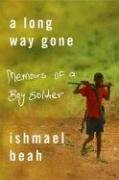
This is how wars are fought now: by children, hopped-up on drugs and wielding AK-47s. Children have become soldiers of choice. In the more than fifty conflicts going on worldwide, it is estimated that there are some 300,000 child soldiers. Ishmael Beah used to be one of them.What is war like through the eyes of a child soldier? How does one become a killer? How does one stop? Child soldiers have been profiled by journalists, and novelists have struggled to imagine their lives. But until now, there has not been a first-person account from someone who came through this hell and survived.In A Long Way Gone, Beah, now twenty-five years old, tells a riveting story: how at the age of twelve, he fled attacking rebels and wandered a land rendered unrecognizable by violence. By thirteen, he’d been picked up by the government army, and Beah, at heart a gentle boy, found that he was capable of truly terrible acts.
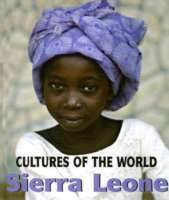
This book provides a comprehensive look at the country of Sierra Leone, which gained independence in 1961. Located in western Africa, bordered by Guinea and Liberia, Sierra Leone is recovering from a lengthy civil war that left the country with many challenges. The text offers chapters on the geography, the history, the formation of its new government and its structure, the economy, the environment, the people of Siera Leone, their religion and culture. The book is illustrated with color photography.